eSIM has received a lot of coverage in the news recently following Apple’s launch this September of the first eSIM-only, no SIM slot iPhone. And the conclusion from most experts is that it is here to stay as the next-generation SIM transitions from smartphones into many other connected devices from smart watches to smart meters to smart cars with expected growth across further verticals. One of the rising key challenges for telcos now is how to manage these new subscriptions, their activations and maintain security.
The old-school approach of telcos, like business in general, was to do everything in-house, operating and owning all infrastructure. But as any IoT evangelist will tell you the previous operation model is no longer compatible with the future of business, or more specifically, how IoT markets and connected devices opportunities are evolving. Greater agility, flexibility, scalability, and affordability are needed, and this has led many telcos to look towards a variety of specialist providers from 5G to cloud to eSIM.
What’s changed since Covid?
In 2021, the global telecom cloud market was valued at $20.4 billion with an expected compound annual growth rate (CAGR) of 19.9% from 2022 to 2030, according to Grand View Research. This sharp growth could be due to the impact of the global COVID-19 lockdowns, where telecom networks saw an increase in traffic during this period, and the need for capacity was at an all-time high and growing. According to a report by Ericson, total global mobile data traffic reached around 67EB per month by the end of 2021 and is projected to grow by a factor of around 4.2 to reach 282EB per month in 2027.
This meant that adopting next-generation communication technologies, such as 5G network installations, was accelerated in many regions of the world. Two-thirds of communication service providers concentrated on enhancing operational service automation with cloud technology, according to a survey by Nokia. All these dynamics aided the growth of the industry.
What will the future of telecoms look like?
With the continued growth in the number of IoT connected devices in consumer electronics and the expected surge in the application of machine-to-machine (M2M) communications come new opportunities. eSIM is anticipated to become an integral component of this evolution, as it opens the door to a wider range of connectivity from wearables, laptops, and tablets, to smart appliances, meters, and cars. Counterpoint Research estimates that there was already around one billion eSIM devices in 2020 and that this number will swell to over six billion by 2025. This presents several opportunities for mobile network operators (MNOs) and mobile virtual network operators (MVNOs) when it comes onboarding a significantly greater volume of devices onto their network.
iPhone 14 in the news

Apple’s release of its first smartphone without a traditional SIM tray and its resulting heavy media coverage will likely spur user awareness and stimulate demand for eSIM. And, if a recent GSMA survey is any indication, most eSIM vendors expect the majority of OEMs to follow Apple and ditch the SIM tray in their devices by 2024. Adoption is likely to be further spurred by the global chip shortage which is encouraging network operators to utilise the embedded SIM as an alternative to the removable SIM card to avoid increasing price volatility. With this expected exponential eSIM adoption in mind, it benefits MNOs and MVNOs to gain a foothold in the market to capture these new subscribers. This is perhaps something we are already seeing in the US where within in the space of 6 months the number of network operators offering eSIM has ballooned approximately 700%.
The Cloud has rolled in off the horizon
This year, MWC Barcelona had a standalone cloud theme – Cloudnet – with the keynote delivered by Adam Selipsky, CEO of Amazon Web Services (AWS), highlighting that real innovation lies in leveraging cloud capabilities and intelligent networks.
One of the key drivers for MNOs and MVNOs to start adopting the cloud is the debilitating cost of onsite deployments. Although the infrastructure of on-premise systems offers MNOs greater control it can be both a time and resource-consuming experience that leaves most network providers (outside of the very biggest multinational operators) with most if not all of the budget in one basket when in reality there are many baskets to fill. For example, where managing eSIM is concerned, a GSMA-certified platform is mandatory to guarantee a fully interoperable and future-proof solution for telcos. Whilst most operators would recognise the value in this, they may be unaware that the relevant licenses, upgrades, and auditing processes required to ensure compliance to this leading industry standard are pricey, time-consuming, and resource intensive. The lead time on GSMA auditing for onsite hosting is approximately three months, but the complete implementation of a solution including the certification process is about nine to 18 months. Security Accreditation Scheme (SAS) certification costs over $100,000. Even for those providers, who have sufficient resources and budgets not to blink at such an investment, long lead times are inescapable and medium-term ROIs unjustifiable.
How telcos are accelerating their IoT roadmaps
Conversely, cloud deployments can be achieved within weeks and offer flexibility as well as cost-effective, on-demand scalability and agility without the need to maintain expensive servers and allocate personnel. Instead of the high financial outlay for an onsite setup upfront, using the cloud doesn’t tie telcos into fixed fees and annual costs. Telcos can also roll out new IoT services in manageable stages – e.g. consumer devices first and M2M devices or specific verticals later – rather than having to commit to rolling out everything at once. With cloud telcos can scale up quickly as business needs require at a fraction of the cost, achieving maximum ROI and without sacrificing any key features.
Deutsche Telekom leverages all the benefits of the cloud
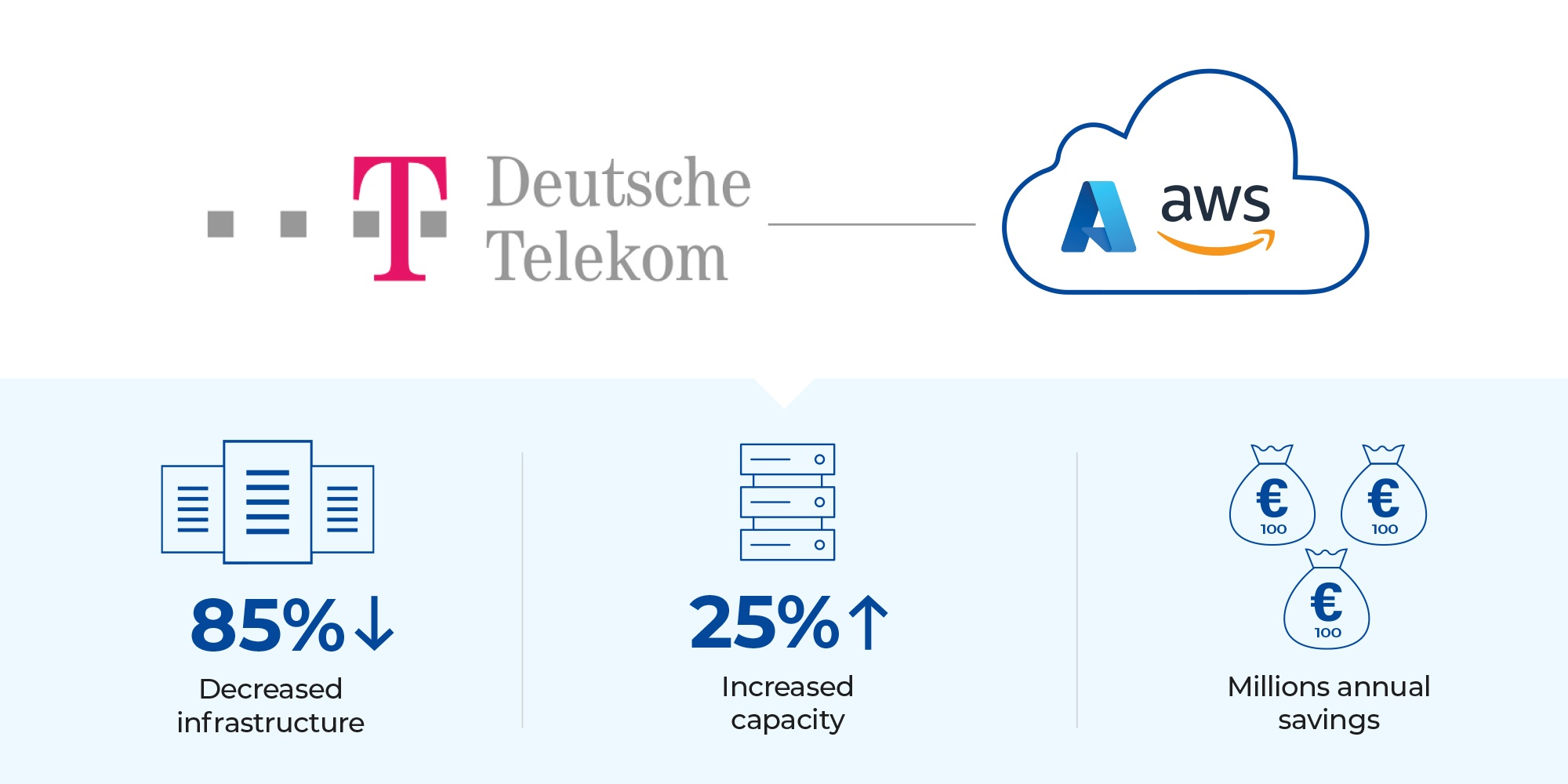
Deutsche Telekom moved 60% of its IT applications to Microsoft Azure and AWS clouds to great effect, reducing its data centres around the globe from 89 to 13, increasing compute and storage capacity by around 25%, and saving an annual amount that was disclosed as a “three-digit-million-euro sum.”
The big misperception of cloud security
With the adoption of new technologies, the security of networks and data is always of critical concern for operators with international security standards and best practice recognised as some of their best defences. This has motivated public cloud giants – Amazon Web Services, Google Cloud, and Microsoft Azure – to focus on investing in and developing the security of their operations to such a level that even the most obstinate telecom operators are starting to make their move to the cloud.
These cloud providers are now meeting stringent guidelines for security and privacy. For example, AWS claims to support more security standards and compliance certifications than any other offering, including PCI-DSS, HIPAA/HITECH, FedRAMP, GDPR, FIPS 140-2, and NIST 800-171, to assist their customers in meeting regulatory requirements from around the globe. They also have the capability to fervently keep their infrastructure up to date.
AWS, Google Cloud, and Microsoft Azure are GSMA SAS-SM (Subscription Management) certified for data centre management and operations that enable subscription management service providers such as Workz to host their solutions in the cloud. The cloud architecture is designed by the subscription management service providers to be the same as if it were hosted onsite. Data is always encrypted; all the keys are retained in the hardware security model (HSM) ensuring they remain private.
Workz has partnered with Microsoft Azure to combine its expertise in subscription management with Microsoft’s hosting capabilities meaning the platform security is at the same level as an onsite solution in terms of key management, encryption, restrictions in public access and other security measures.
How to avoid an operator’s worst nightmare
For telcos, offering a reliable service to users activating their subscriptions is mission-critical and when it comes to eSIM, there have been a number of reported occasions where a certain network operator has been unable to deliver their profile to the user’s device due to unforeseen or unusual technical issues with their own or provider’s infrastructure. If the subscriber is unable to activate their subscription upon the first attempt, it is highly likely they may take their business elsewhere. Furthermore, if the server is not backed up with 24/7 technical support, it may be a whole weekend or holiday before the issue is even discovered, let alone resolved.
Cloud providers have the resources to deploy the infrastructure that is more reliable and scalable that any network operator (or any other type of business for that matter) can achieve. They provide a high-quality hosting environment for a certified subscription management provider to deliver its specialist services with full control over the data, process, design of the platform architecture, and profile development. Most leading cloud providers will avoid such service failures and guarantee high uptime SLAs, system redundancy, and around-the-clock technical support. This ensures that if the unexpected does happen the subscription manager, network provider and their subscribers can continue with business as usual.
More and more telcos are moving to the cloud
Starting in 2020, Microsoft took steps to become part of the telecom ecosystem through its purchases of network virtualisation specialist Affirmed and telecom software developer Metaswitch. It followed with its launch of Azure for Operators which combines virtual network functions from many different providers in the Azure environment in a move to encourage network operators to move workloads to the cloud. Analysts have suggested that Microsoft could steadily co-opt more and more core network functions, leaving its telco partners to focus on the access networks and its end users.
This March, almost seven months after its acquisition of AT&T’s network, Microsoft announced that AT&T will run its mobility network on Microsoft’s Azure for Operators cloud, harnessing the trends toward Software Defined Networking (SDN), Cloud-Native Network Functions (CNFs), and Virtualised Network Functions (VNFs) coupled with the service-based architecture of 5G, to begin digitally transforming the network. In July this year, Australian telecom Telstra announced Microsoft Azure as its preferred public cloud partner in an agreement that will run for five years with Telstra moving 90% of its applications to Azure’s cloud infrastructure by 2025.
Operator infrastructure ratios in the cloud
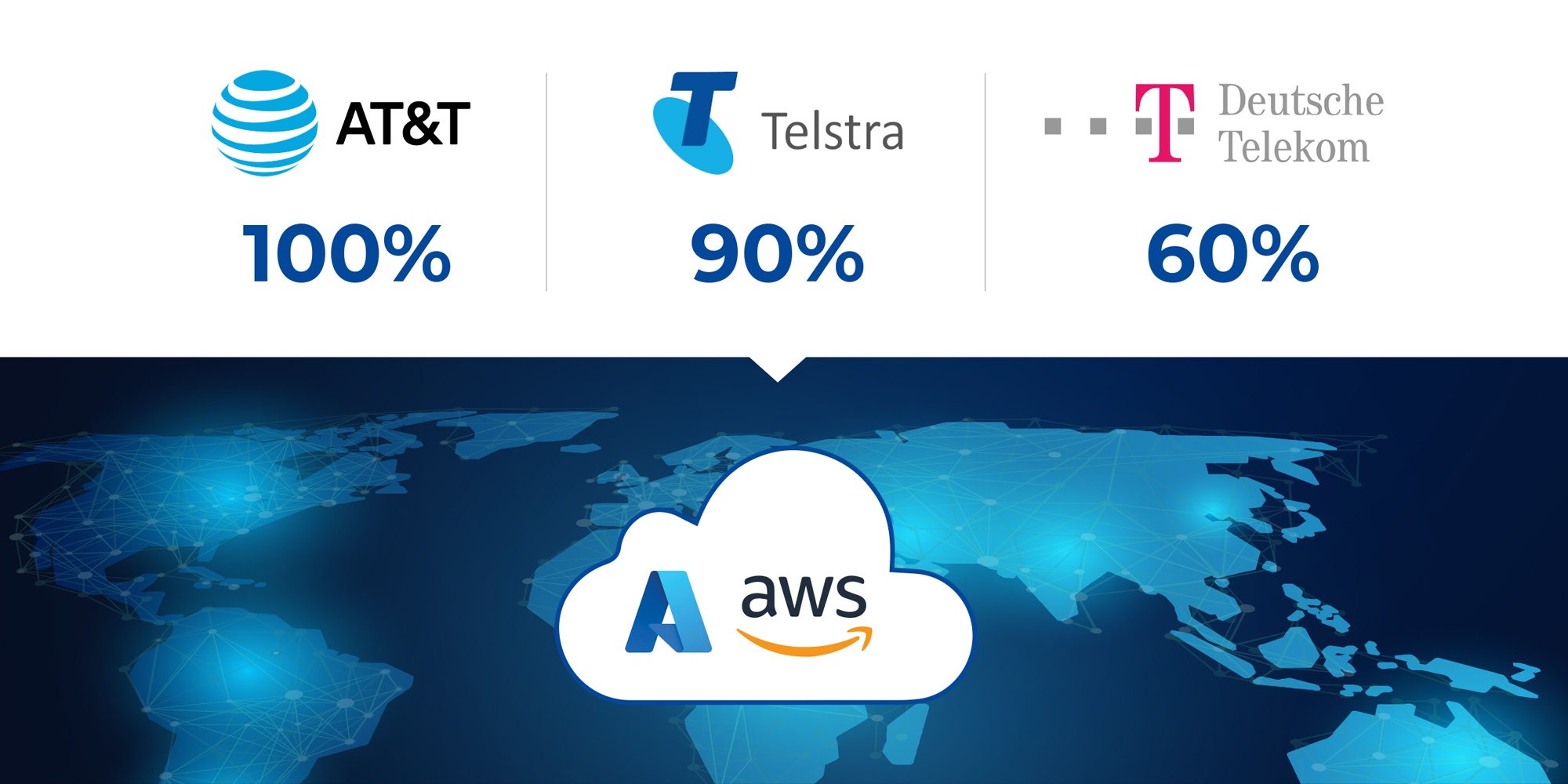
Vodafone and Google Cloud signed an agreement in 2021, whereby the carrier’s Google Cloud environment will be powered by a custom, high-capacity data processing platform that around 1,000 Google and Vodafone employees across three countries will work together to develop. Before that, in November 2019, Vodafone announced that 2,730 PB of data from its analytics platform had been transferred over Google Cloud’s network in the previous financial year, equating to an annual saving of 70%.
Last year, Dish Network announced a new agreement with AWS that involved running its 5G network software inside the AWS cloud. The original plan was to run only the core and some operational and business support systems in the public cloud, but DISH quickly realised it didn’t make sense to try to replicate something that AWS Cloud was already doing so well.
Globe Telecom boosts agility with cloud
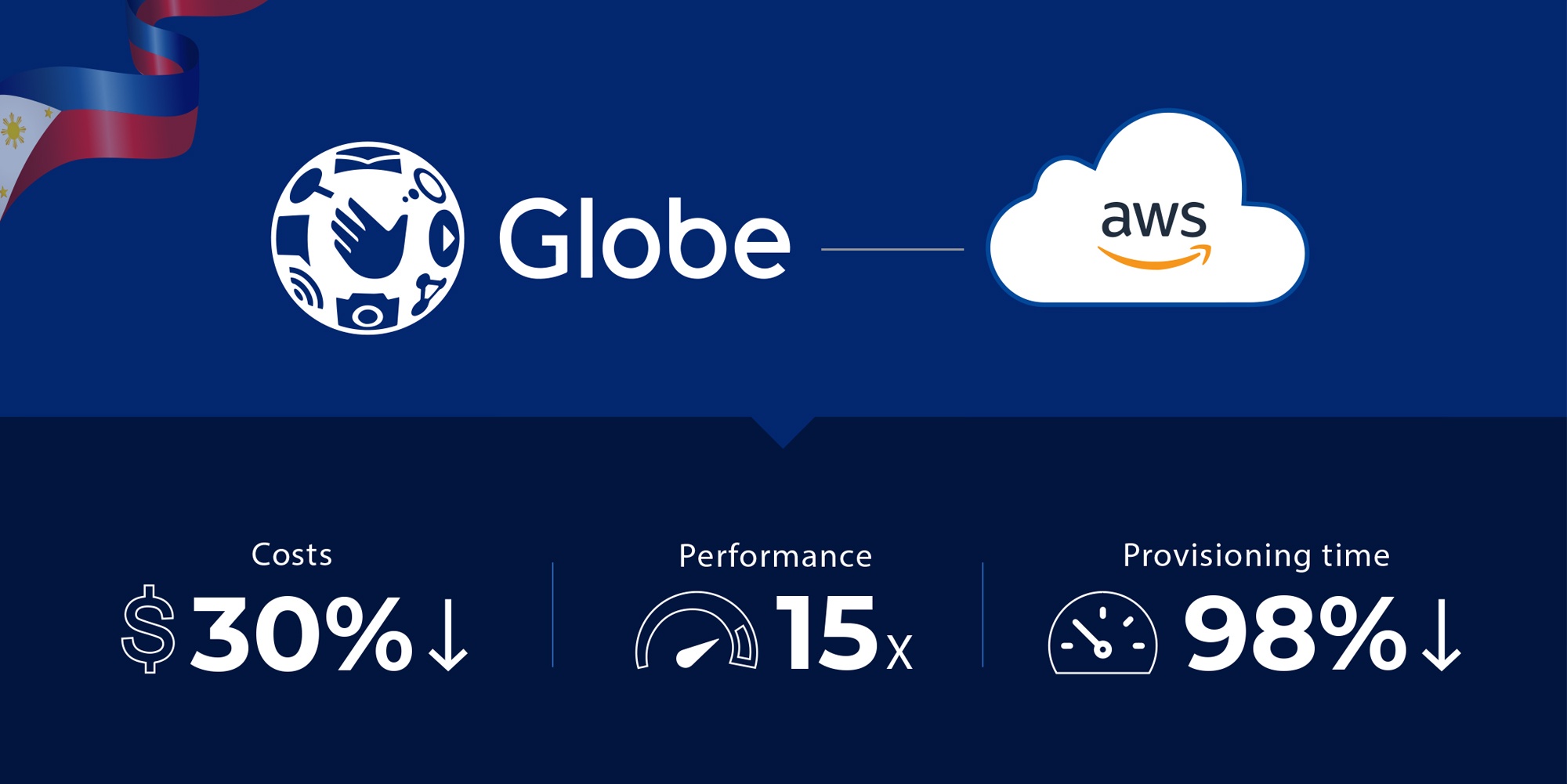
In the Philippines, Globe Telecom used AWS to move its IT environment to the public cloud, cutting costs by 30%, increasing app performance by 15 times, and reducing provisioning from three months to two days.
In terms of investment into infrastructure, major cloud providers are best equipped to stay on top of industry needs. For instance, this year Google plans to spend $9 billion to build data centres across the US and implement strict security measures for their operation, whilst AWS plans to invest $5 billion in the UAE over the next 15 years. Both of these examples represent a level of investment most telcos will find hard to match. And as major cloud providers expand their global footprint, opening more local data centres in more countries, they are, in turn, spurring local regulatory authorities to update and evolve data policies to ensure businesses in their markets can take advantage of their services.
Meeting the demands of the modern subscriber
The connectivity requirements of the mobile subscriber have changed and continue to change dramatically. With the increasing array of connected devices, the era of users with a single device subscription looks to be a thing of the past. Cisco forecasts that by next year, mobile users will on average have around four connected devices each – many, if not all, are likely to be eSIM. According to a study by Consumer Pulse, around 80% of consumers are either actively in favour or open to the idea of an eSIM-only future for smartphones. It is this consumer enthusiasm for eSIM that could be a key driver for MNOs and MVNOs to offer subscriptions to their clients.
As eSIM adoption intensifies, the MNOs that are quick to leverage their eSIM offerings will be well placed to capture a significant market share. Some telcos have already started. Telefónica Germany’s focus on providing its subscribers a fully mobile-centric offering saw their eSIM activations double each month in the first nine months of launch. At the beginning of this year, Manx Telecom, an MNO based in the Isle of Man, launched an eSIM offering to the traveller segment as the world’s travel restrictions begin to relax in the aftermath of the COVID-19 pandemic.
Manx Telecom takes advantage of post-Covid travel
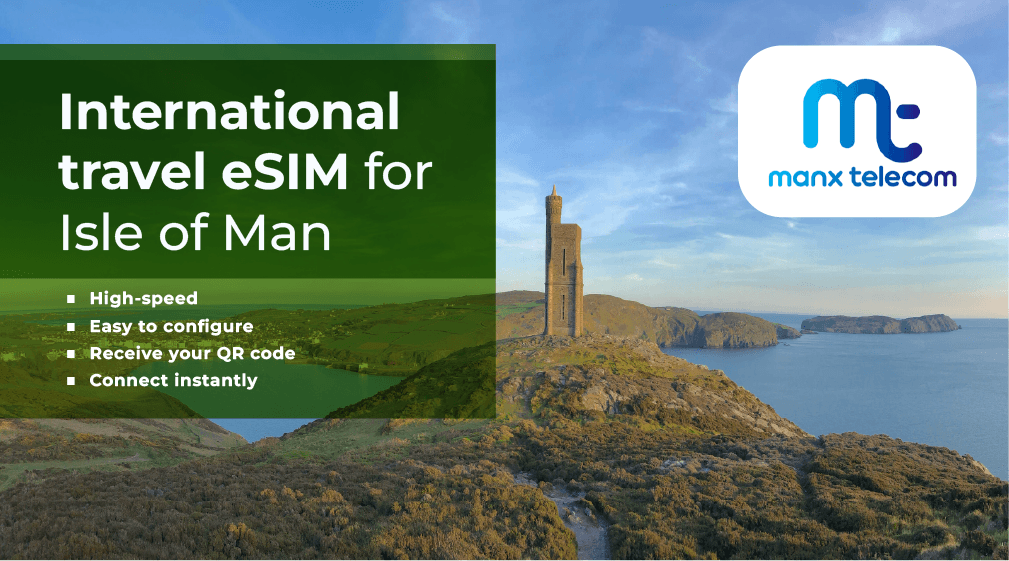
In September, Nepal Telecom launched its eSIM service and allowed its existing prepaid and post-paid users to switch to eSIM free of cost. At the same time in the US, days before Apple launched its first eSIM-only iPhone, T-Mobile offered new eSIM subscribers three months of free data in attempt to lure these high-value buyers of Apple’s latest device. It is likely those first in the door will gain critical market share so the value for operators to deliver fast and reliable eSIM services is key – and it may just be cloud that can unlock this opportunity for them.
T-Mobile attracts high-ARPU users with free data
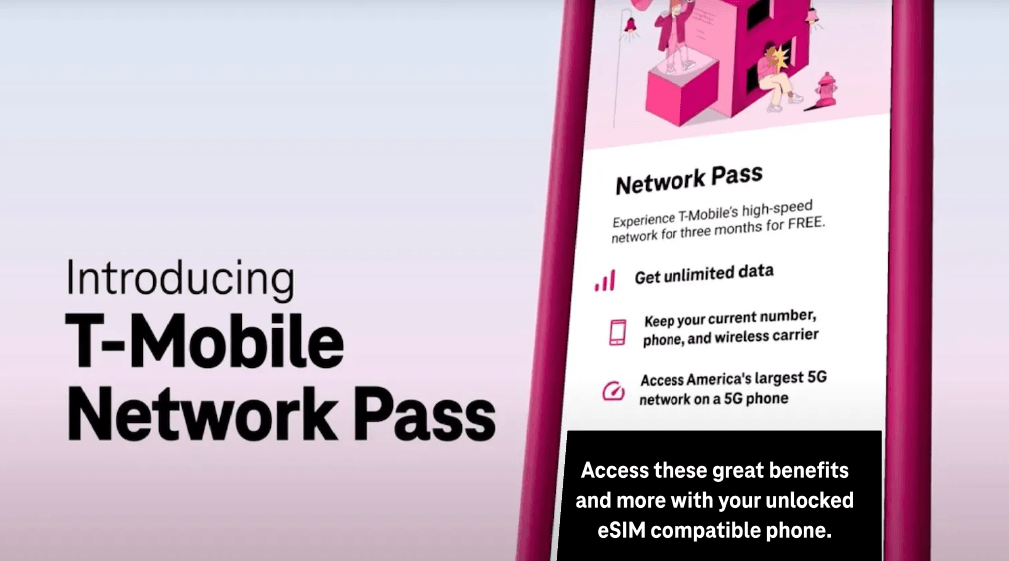
A telcos go-to-market checklist to sell eSIM
With so many factors to consider, there are certain criteria an eSIM platform provider should meet before a telco selects a suitable partner.

Security
How many years’ GSMA SAS-SM experience does the provider have to ensure full security, compatibility, and futureproofing?

Uptime and reliability
What service deliverables will the provider guarantee? Does it offer redundancy to avoid instances of mission-critical server failures?

Interoperability and futureproofing
Does the provider regularly update their solution in line with new GSMA standard updates?

Time to market
How long will it take to implement? Will it enable you to meet your IoT roadmap milestones? Will the timeframe allow your network to establish a foothold and market share before competitors?

Growth plan
What is the scalability offered by the solution? Will you be able to seamlessly manage increased demand and be able to provide the required capacity on-demand in the necessary sector or vertical?

Pricing
How much are you prepared to invest and what type of ROI do you expect to see and when? Does it require you to make long-term commitments or is it flexible based on how demand and your needs evolve? Does it require a large upfront capital expenditure, or does it allow for you to get started without such expenses? What are the running costs and are there any hidden costs such as additional fees for usage or maintenance?
If you’d like to learn more about how to gain new eSIM subscribers within weeks and how to easily and affordably utilise cloud for eSIM with a provider that meets all these criteria, then please reach out to us for more information.


